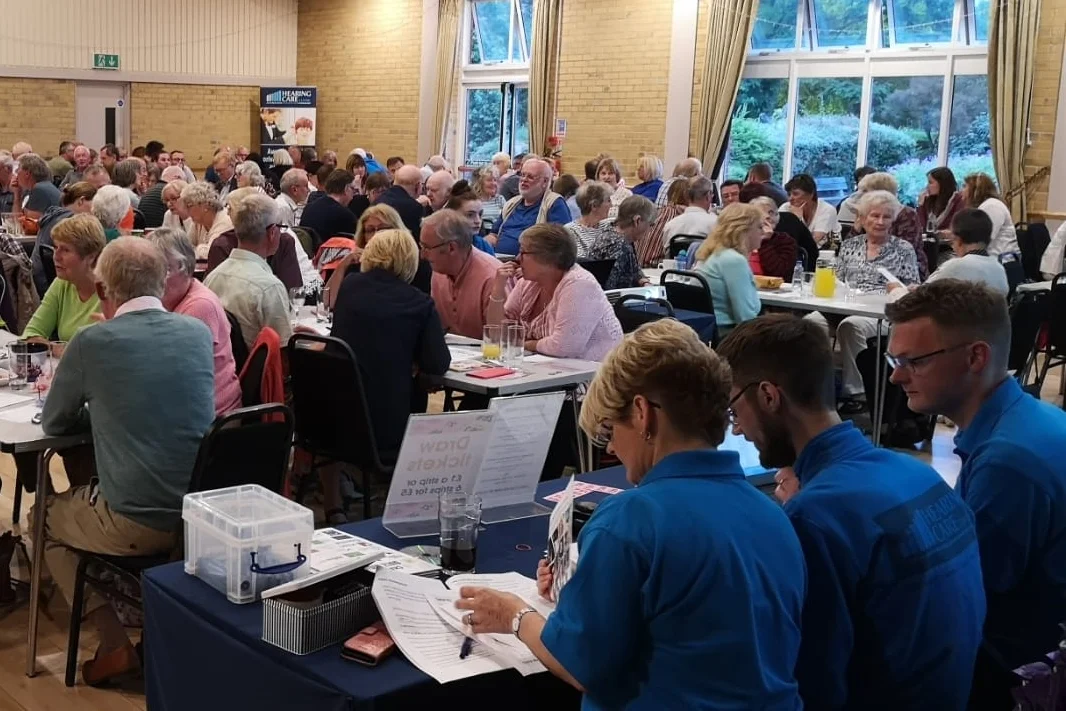Mural memories ...
By Abygail Fossett
Picture by Bryan Adams
If you are a resident of Kesgrave, you may have seen the mural of St Francis, painted on the side of the old pumphouse. Somewhat off the beaten track, the mural can be found by following the public footpath which runs along the road down the quarry, although the road itself is no longer accessible, making the mysterious mural perhaps one of Kesgrave’s best kept secrets. The story behind this mural is an intriguing one, which, with a bit of detective work, we at Living In …, have attempted to uncover.
The short version of the story is that the mural was commissioned by a local lady, Mrs Lucy Rope, in memory of her husband, Michael Rope. Michael had been a squadron leader, and tragically died in service. By all accounts, the artist was an American serviceman recovering from injuries in Kesgrave, Sergeant Irving Smith, thought to have been from Washington. Back home in the States, Smith had achieved some commercial success painting roundels and sharks’ teeth on American aircrafts, a far cry from the melancholy figure of St Francis, the apostle for peace, which he painted at the request of Mrs. Rope on the side of the pumphouse wall.
Lucy Jolly, as she was then, married Michael Rope in 1929. Their marital joy was short-lived, however, and just one short year later, Michael was dead. He had been travelling on an airship destined to reach India, departing from Cardington in Bedfordshire and intending to fly over London, Paris and Toulouse, crossing the French coast Narbonne. Sadly, this was not to be. When the doomed R101 took to the skies, weather conditions seemed reasonably good. As the flight progressed, however, conditions had worsened, with heavy rain and strong winds making the flight’s path difficult to navigate. A problem with the oil pressure in the aft engine car was also reported. Attempts were made to repair the engine and a new course of direction was decided upon. Ultimately, however, this was not enough to save airship R101. In the early hours of the morning on October 5th 1930, the airship hit the ground at the edge of a wood south-east of Beauvais, and immediately caught fire. In one of the most catastrophic airship accidents of the 1930s, forty-eight men were killed, including Michael Rope of Kesgrave. And so, aged just twenty-three and seven months pregnant, Lucy Rope became a widow.
Following her husband’s death, Lucy then embarked on a life of serving her community through charitable work. It may interest readers to know that the Holy Family and St Michael Catholic church in Kesgrave was one of her first projects, commissioned in Michael’s memory. Its stunning stained-glass windows were designed by Michael’s sister, Margaret Agnes Rope, one of the finest stained-glass designers of the early half of the 20th century. Suspended from the roof of the church is a model of the R101 airship, and an inscription beneath the glass depiction of St Michael reads: “Pray for Michael Rope who gave up his soul to God in the wreck of His Majesty’s Airship R101, Beauvais, October 5th 1930”. The church stands as a moving tribute to the husband Lucy lost after such a cruelly short time together, and as a reminder of the sacrifice which he made for his country.
Lucy dedicated her life to supporting many other worthy causes. She supported a hospital in Jorochito, Bolivia for the treatment of leprosy, as well as St Stephen’s hospital in Kampala, Uganda, which supports families whose lives have been torn apart by the AIDs epidemic. With her son, Crispin, she established and administered over her own charity, whose causes included support for the disabled, relief for those living in poverty and promotion of the public understanding of science. She died aged ninety-six on August 4th, 2003.
And so, this leaves one final figure in the story of the mural, the American artist, Irving Smith. However, there are few details about his life which can be verified. It is known that he served as a sergeant in the 356th fighter group and 360th fighter squadron and was therefore flying missions between 1943 and 1945. During this time, it can be assumed, his path must have crossed with Lucy Rope, some thirteen years after Michael had died.
Here, alas, the trail of what became of Sergeant Irving Smith goes cold and we are reduced to speculation. Nothing can be found of his previous artwork, and little is known about his military career. Perhaps he, too, was killed in service; the 356th fighter group suffered the highest ratio of losses to enemy aircraft claims of any Eighth Air Force Group, earning them the unfortunate reputation of being the 'hard luck' outfit.
More hopefully, in May 1946 the Californian newspaper the Geyserville Press reported the marriage of a Mr and Mrs Ray Serpanski. June Serpanski, née Smith, had two brothers, the elder of whom being a Sergeant Irving Smith who was expected home the following month, bringing three years of overseas service to a close. Although the article does not state where Smith served, the dates seem to fit with what we know about Irving Smith, the Kesgrave artist: if June Smith’s brother completed three years overseas in 1946, then he could well have been in the UK from 1943 until that point.
This would, however, contradict local knowledge which believes Smith to have hailed from Washington, with the Geysersville Press describing the family as native to California.
More than likely, the fate of Irving Smith has been lost to history. Our very own unknown soldier – and artist – has left his mark on the world, perhaps not in the way he imagined, thousands of miles away from home across the pond, but he is nonetheless remembered, and remains a greatly appreciated fragment of local history.




